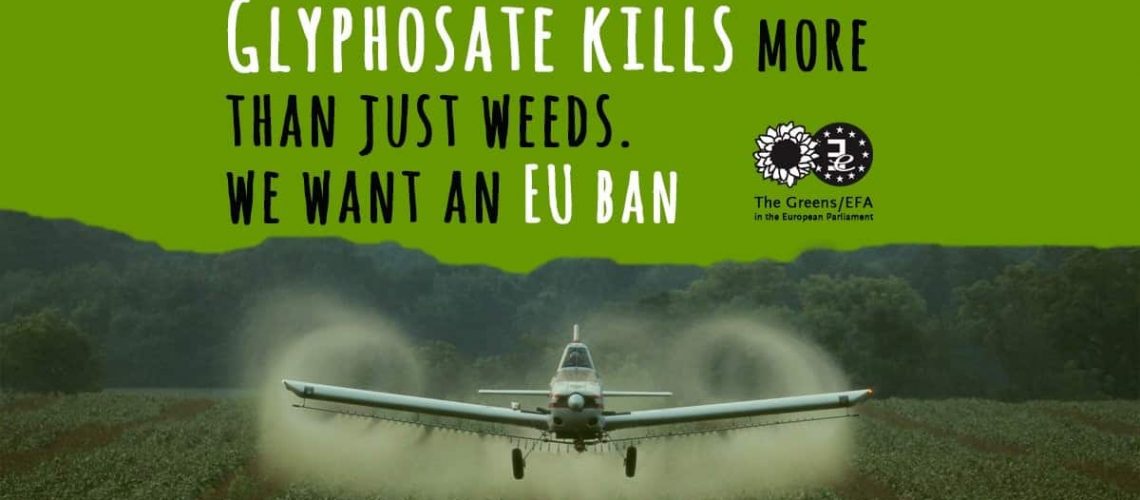The debate around Agriculture Minister Alannah MacTiernan’s recent comments calling on the state’s grains industry to have a plan B in case of any future ban on glyphosate, unsurprisingly brought out the usual suspects who never miss an opportunity to criticise anything she says.
Not that I am shy of giving the minister some considered advice myself, but some of the things I’m reading are unbecoming of an important sector that needs to have a constructive relationship with a powerful Minister. The industry should think carefully and pragmatically on how it responds to issues raised by her as she could well be sitting as our minister for the next six or even ten years. While we might be challenged by some of her views, she is not on record as calling for the banning of glyphosate (or live exports), just continuing to ask us the hard questions about planning for the future.
From the tone of the twitter comments and the over-reaction of the opposition spokesperson, one would have thought that it was the Minister herself calling for the chemical to be banned rather than simply asking a pertinent question about what our risk mitigation plans are? Those quick to demand her sacking seemed to struggle to understand the question posed, or the existential threat we are facing without access to glyphosate. So, in answer to the Minister’s question; yes we do have a plan and this is why we need it.
The world is facing an enemy, a creeping powerful enemy that demands the end of the use of agri-chemicals. It’s called the extreme green movement and it has slowly been marshalling its forces and building a global case against modern agricultural practices.
We need a Plan B because war has been declared between these global activists and the farmers and now it’s a race for the hearts and minds of the world community.
Looking back in time we can trace the first shot that was ever fired in this war to the publication in 1962 of Rachel Carson’s influential call-to-arms environmental book Silent Spring. It was a pivotal work which marked the birth of much of the modern day Green Movement and the beginning of their fight to end the global use of agricultural chemicals and modern large scale industrial farming.
In the intervening years this movement has had its wins and losses, but it has never retreated and it’s not interested in compromise. In fact, it has mounted a relentless campaign propagating the myth that the world will be a better place without the chemicals, the GM crops and the intensive farms.
The extreme end of the movement is part religion, part political ideology. It has autocratic collectivist overtones idealising small scale farming, which is a reason why it tends to appeal to those on the extreme left of politics. It uses the organic movement as its ideal, selling a story of food production that is a safer, healthier, home grown alternative that lives in harmony with the environment. This idealistic vision has attracted urbanites from the inner city and defies the practical reality of what’s needed to feed 7.5 billion people, growing at 230,000 a day.
This extreme movement’s first big win came back in the 1970s after the decade long battle to end the use of DDT which was banned in the United States (1972) and Australia (1987). Next on their list was 245T banned in the 1990s – two relatively easy wins of early generation chemicals that posed major risks to people and the environment. After that their attention shifted to the fight against Genetically Modified crops, a fight that they have been slowly losing as the overwhelming advantages of GM and their proven safety as a means of supporting global food production has overcome the relentless fear campaigns.
Having failed to stop the growth of GM, the global green activists have turned their attention to the key ingredient that has allowed the world to lift millions out of hunger – agri chemicals. Not just the high risk ones like DDT and 245T but all agrichemicals. The EU is the movement’s favourite hunting ground with a growing list of wins as chemical after chemical has been forced onto the banned list. Today the EU has placed bans on 72 of the top 500 registered pesticides that are currently available for use in the United States, added to them are a growing list of fungicides and herbicides.
The global green movement has also convinced over half of the 34 EU countries to ban the growing of any form of GM crops and now their attention has turned to the big one, the banning of glyphosate. Glyphosate is important because it is key to growing many of the worlds genetically modified crops. As it can be sprayed into growing crops, killing virtually all other weeds except for the crop itself. It is the perfect chemical – relatively safe, cheap, and effective, saving vast amounts of other chemicals, diesel and carbon. It’s one of the most important chemicals in the world.
Economic reviews back this up showing that the big three GM crops cotton, canola and maize are seeing yield increases of 9% for herbicide tolerance and 25% for insect resistance and even better for the developing world’s farmers. This is in direct contradiction to the green movement’s arguments that industrial farming is bad for the soils and productivity.
But despite the success that GM crops have had in reducing chemical inputs and increasing yields, the fear campaign against agri-chemicals and GM rolls on with a global focus on ending the use of the key pesticides and herbicides that are linked to GM crops. It’s a clever strategy and it’s starting to work.
We know that glyphosate is the holy grail in this fight with activists remembering the 10-year battle to get DDT banned following the release of Silent Spring. What was possible 50 years ago is eminently easier today with the global reach of fear campaigns through the use of social media and a western world that is far removed from the realities of mass starvation.
We have already seen Germany legislate to ban glyphosate from the end of 2023, the first of the big grain production countries to do so. It’s now game on – once one of the big western countries falls over, the others have a tendency to follow.
We have seen this with the success of the banning of the live export trade out of New Zealand back in 2007. This encouraged the global animal activist movement to redouble their efforts in Australia and they nearly got there back in 2011 with the Indonesian ban and again in 2019 with the federal ALP policy to end live exports. Rest assured, their commitment has not faltered, and they will be back with the same policy at the next election.
But the cost of banning key chemicals is deliberately being ignored by the extreme greens. A new paper published in the journal GM Crops and Food points to significant increases in carbon emissions and a worse environmental impact associated with weed control practices if farmers around the world stopped planting glyphosate-tolerant crops. Land use changes will arise, with an additional cropping area of 762,000 hectares, including 167,000 hectares of global deforestation. These land use changes will generate an additional 0.5% of total global carbon dioxide emissions, roughly equivalent to half of Australia’s total output.
Another impact which will hit the world’s poor, is an increase in the global prices of all grains with soybeans expected to increase 5.4%, a key feed for animal protein that is important for feeding developing countries with meat.
The ideological hardcore greens completely ignore the carbon and the commodity cost implications of banning agrichemicals just as they ignore the science around the cancer risk.
Fears that synthetic chemicals are responsible for an endemic of cancers have been promoted by the global green movement from the days of the publication of Silent Spring. These fears have no evidentiary basis.
One common sense test is the link to farmers themselves who are more exposed to many times more levels of ag chemicals than the rest of the population. Where is the massive spike in their cancer rates? And in another example, rates of stomach cancer have declined by about 60% in the last 50 years and the stomach would be especially exposed to carcinogenic effects of ingested pesticides.
This is not to say that ag chemicals are not carcinogenic – most things are – but we need to be clear about the costs and benefits and the risks and rewards before we go risk free. Health precautions are a noble principle, but how many million kids should go hungry because we worry about a remote risk of cancer from a few parts per million of glyphosate. A perfect risk free world comes at great cost, is it fair to impose that on the world’s poorest people? Hard questions indeed, but ones that deserve an answer.
The green movement has to date refused to debate these risks just as they seem to be unaware that we consume many thousands of times more natural pesticides than synthetic ones, since plants make their own pesticides to ward off predators. We also forget that every mouthful we eat and sip of water we drink contains poisons, but safety regulations are normally set between 100 and 1000 above the concentrations that might be harmful to us.
The world is increasingly jumping at shadows when it comes to ag chemicals like glyphosate. So if we want to build the case to keep glyphosate, we need to have a plan starting with a frank debate about the risk of further bans being successfully imposed by our trading partners and legal wins in our courts ending the registration of glyphosate in the Australian market.
Our State Minister for Agriculture is quite entitled to ask what our industry plan is, just as the industry is entitled to ask her how she plans to help us? Again in answer to her question; yes we do have a plan B and also a plan A. Plan A is to build the social licence of community support and understanding as to why we need these chemicals and that we can manage the risks. Plan B is to support the development, trialling and registration of the next generation of chemicals and techniques to manage without glyphosate and whatever is next to be banned.
The WA grains industry is already well on the path to develop plan A, a long term comprehensive Trust in Agriculture plan. But the industry will require support from both the state and commonwealth governments along with matching funding; we will need millions of dollars to invest in this space to defend not just our access to glyphosate but all ag chemicals.
Critically those resources will need to come from a portion of the $50m in federal levies growers currently pay. Unfortunately, some of those who offer themselves up as future Minister of Agriculture have been quick to shout down the current Minister for asking the hard questions. Interestingly they are also the same ones to claim we don’t need any more levy’s, but I wonder what they would pay to keep access to glyphosate? And what is their plan?
What these critical commentators who dislike levy’s fail to understand is they sound as ideological as the extreme greens we are battling. We need to face the fact that we need to invest millions of dollars to convince the Australian population to trust both us and the regulators. Because the alternative is not business as usual minus the current 1% of industry levy’s nor is it living in an organic nirvana, it’s a global dust bowl of global hunger with a massive increase of carbon emissions, land clearing and a wave of bankrupt Australian farmers wishing we had spent more time effort and money fighting to keep chemicals such as glyphosate.











